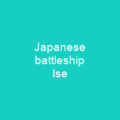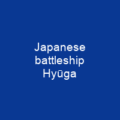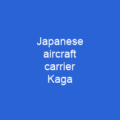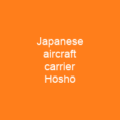Hyūga: The Last of the Ise-Class Battleships
Imagine a majestic battleship, towering over the waves with its imposing silhouette and powerful armament. This was Hyūga, the second and last ship in the Ise-class built for the Imperial Japanese Navy in the 1910s. Launched on January 27, 1917, she embarked on a journey that would span decades of conflict and technological evolution.
Design and Early Years
The Ise-class ships were designed as improved versions of the Fusō class, with a length of 208.18 meters overall, a beam of 28.65 meters, and a draught of 8.93 meters at deep load. They displaced 29,980 long tons at standard load and 36,500 long tons at deep load. The ships had two sets of direct-drive steam turbines, each driving two propeller shafts using steam from 24 Kampon Ro Gō water-tube boilers.
Modernization and Reconstruction
Hyūga underwent partial modernization in 1927-1928 and 1931-1932, and then reconstruction from 1934-1936. During this period, her displacement increased to 42,001 long tons at deep load. The forward superstructure was enlarged with multiple platforms added to the tripod masts, creating a pagoda mast style, and torpedo bulges were added for improved underwater protection.
World War II and Beyond
The ship participated in minor roles during the Second Sino-Japanese War and World War II. In 1940, Hyūga served as the flagship for Emperor Manchukuo’s state visit to Japan. During the Pacific War, she was part of the Aleutian Support Group and later converted into a hybrid carrier.
Conversion to a Hybrid Carrier
The loss of four Japanese aircraft carriers during the Battle of Midway in June 1942 severely limited Japan’s ability to conduct operations. Plans for full conversions were rejected, so Hyūga and her sister ship Ise had their rear pair of turrets removed and replaced with a flight deck equipped with two rotating catapults.
Final Days
In September 1944, the aircraft of the Fourth Carrier Division were ordered to prepare for combat. The 634th Naval Air Group attacked the aircraft carriers of Task Force 38 near Formosa with little effect and heavy losses. On October 25, Hyūga positioned near light carriers Chitose and Chiyoda to protect them with anti-aircraft guns.
On February 6, 1945, Hyūga and Ise departed with troops and munitions for Manila but received news of American air attacks on the city. They diverted their route to the Spratly Islands before arriving at Zhoushan Island near Shanghai. The Fourth Carrier Division was disbanded on March 1, and Hyūga was reduced to first-class reserve.
Final Moments
More than 240 American carrier-based aircraft from Task Force 58 attacked Kure on March 19, 1945. The ship was hit by three bombs, killing 37 and wounding 52 crewmen. She was later attacked during the bombing of Kure on July 24 and was struck by 10 bombs that blew off part of her stem, destroyed her bridge, and started major fires.
Over 200 sailors were killed, including Kusakawa, and 600 wounded by the attack. Progressive flooding caused the ship to sink in shallow water over the next several days, and her crew was ordered to remove all easily accessible weapons. Hyūga was unsuccessfully attacked by 24 USAAF Consolidated B-24 Liberator heavy bombers on July 29 and abandoned three days later by her crew.
She was removed from the Navy List on November 20, 1945, marking the end of an era for Hyūga and the Ise-class battleships. The story of these magnificent vessels serves as a reminder of the technological advancements and the human cost of war in the early to mid-20th century.

You want to know more about Japanese battleship Hyūga?
This page is based on the article Japanese battleship Hyūga published in Wikipedia (retrieved on March 11, 2025) and was automatically summarized using artificial intelligence.







